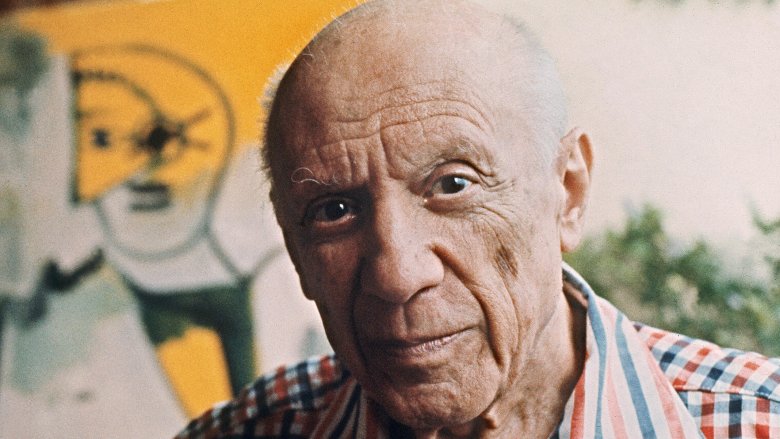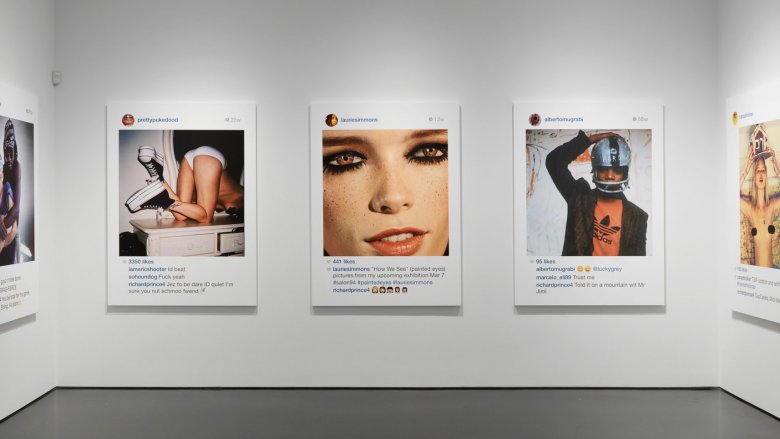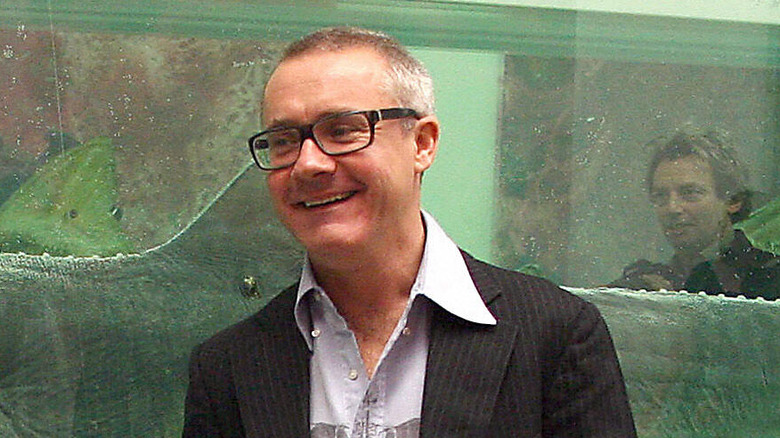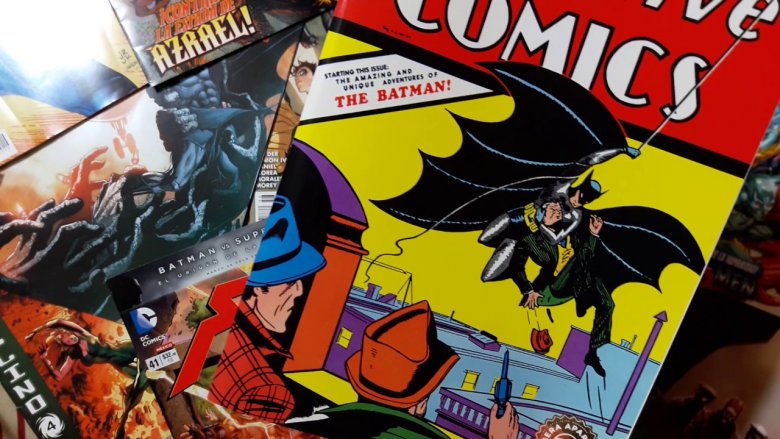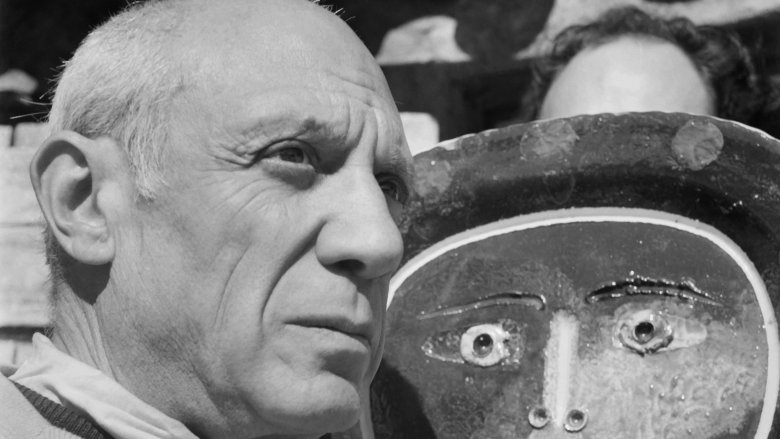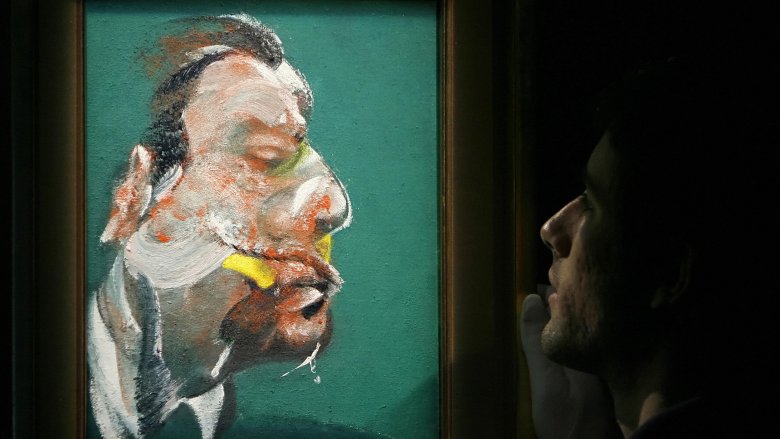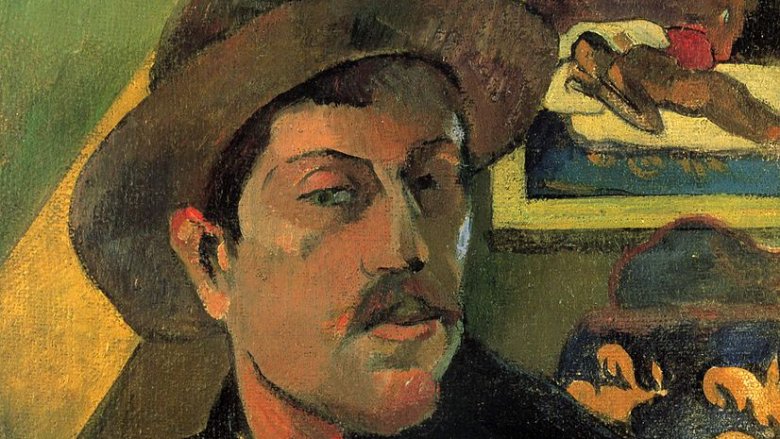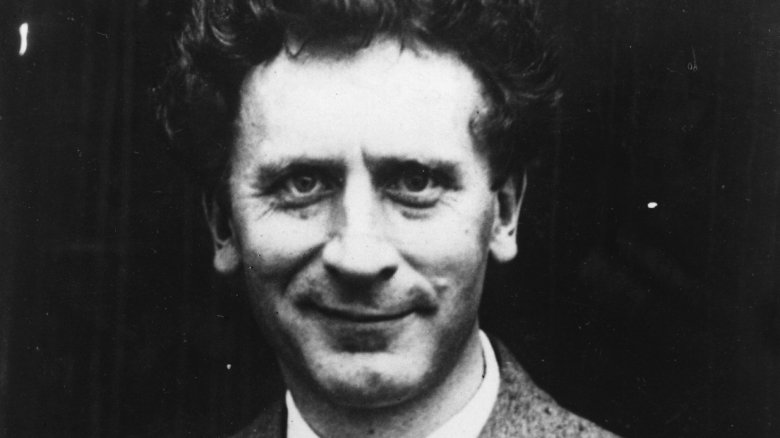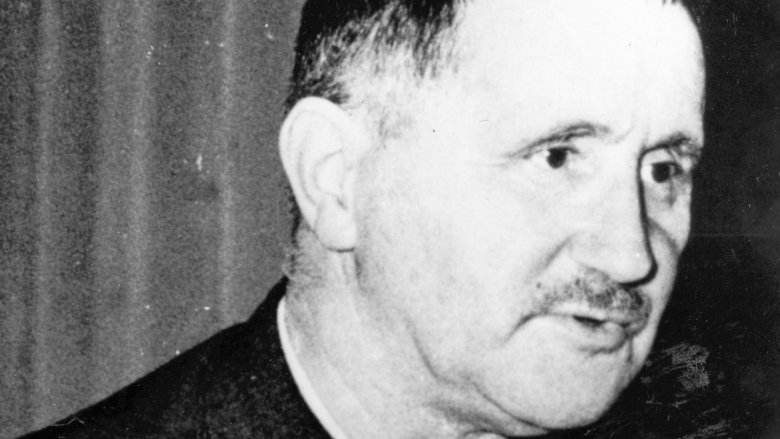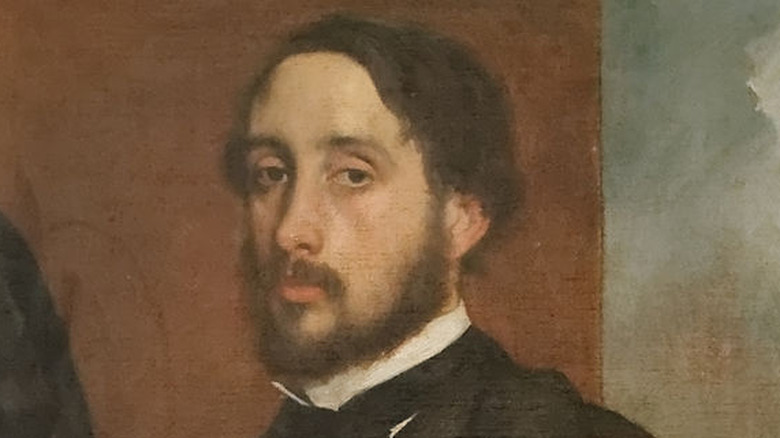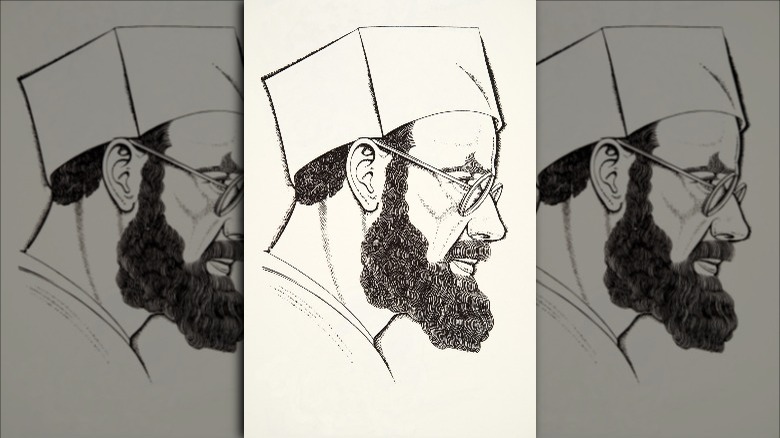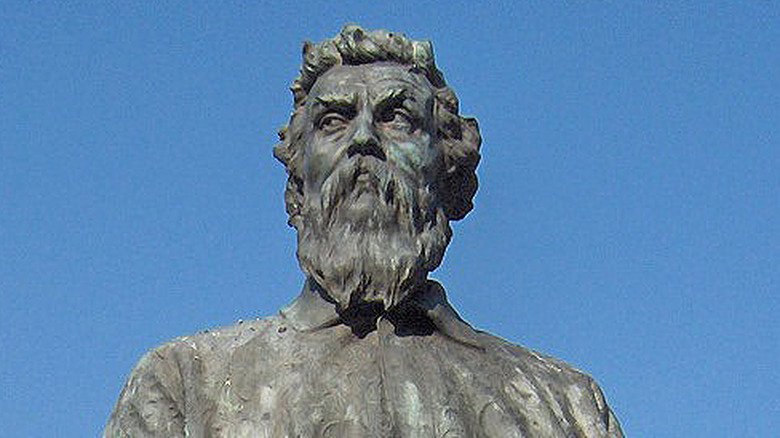Respected Artists Who Were Actually Terrible People
It's common knowledge that you don't need a beautiful soul to create beautiful art. Look at any number of famous painters, musicians, or writers, and it's clear that a beautiful soul is a requirement that ranks way below being a higher-functioning alcoholic in the creativity stakes.
But while you're probably aware that not all artists are paragons of virtue, you're likely less aware of just what total waste-expelling orifices some of them are. There are artists out there whose names you can recall with greater ease than you can recall your own mother's birthday — towering geniuses in the worlds of painting, music or design who are so unlovely that spending time with them would be the psychological equivalent of hurling yourself into a waste disposal unit. Think great art can't be made by people who are total art-holes? This pantheon of pimps, murderers, bullies, and rip-off merchants begs to differ.
Richard Prince made millions with open plagiarism
Richard Prince is a guy who sits so close to the top of the art pyramid that it's probably giving him hemorrhoids. His work sells for millions of dollars. In 2015, Artnet named him one of the 10 most expensive living American artists. All of which is really baffling to the people who actually created the work Prince is selling. For most of his career, this fabulously wealthy artist has made his fabulous wealth by stealing other people's images.
Photography site PetaPixel has an excellent article on Prince's antics, and it reads like a "Rough Guide" to being a jerk. In 2014, Prince held an exhibition of photos he'd stolen off Instagram, selling them for $100,000 each without telling the original photographers. When one of them made the not unreasonable point that, since Prince was selling their work, maybe they could have some money, the artist replied with a tweet mocking "phony fraud photographers" who "keep mooching me."
Even this pales in comparison with Prince's treatment of Patrick Cariou, a French photographer who spent time photographing Jamaican men for his book, "Yes Rasta," only to see Prince snatch around 30 of his images, draw electric guitars on them, and sell them for millions of dollars (via The Verge). After a multi-year lawsuit ruling in Cariou's favor, Prince appealed and the ruling was overturned in 2013. The Instagram case is ongoing as of 2020.
Damien Hirst once spent a year bullying a teenage boy
You've never heard of street artist Cartrain, but he's the kid who pulled off the costliest art heist in British history. At least, according to Damien Hirst. But, as you're about to see, Hirst's word isn't exactly unbiased regarding Cartrain. In 2009, the mega wealthy art superstar spent an entire year pursuing a vendetta against the 16-year-old, having the boy arrested and banned from every gallery in London (via The Guardian).
The origin of this feud was a collage Cartrain tried to sell. Supposedly a portrait of Hirst, it depicted the artist with his own diamond-encrusted skull artwork for a head. It was clearly a teenager's slightly lame attempt at being edgy, but Hirst apparently thinks he has a monopoly on lame attempts at edginess. He sued Cartrain for £195 and demanded all copies of his work destroyed.
In retaliation, Cartrain snuck into a Hirst exhibition in London and stole a box of pencils from Hirst's sculpture, "Pharmacy." So Hirst did the totally rational thing and reported Cartrain to the police. Oh, and he valued the pencils at £500,000, since they were part of one of his artworks, meaning Cartrain could have been charged with the biggest art theft in United Kingdom history (via the Independent). Cartrain was then banned from every gallery in London because Hirst may be able to take a pickled shark and turn it into art, but apparently he can't take a joke.
Bob Kane stole his friend's work and let him die in poverty
Bob Kane's greatest claim to fame was being the artist who claimed he'd invented Batman. Bill Finger's greatest claim to fame was being the artist who actually invented Batman, only to watch as his more influential friend took all the credit, belittled Finger's own claims, and left him to die in obscurity. Yep, the greatest superhero America has seen came from a broken home with two warring dads. But while Bat-dad Kane would make money off Batman from day one, Bat-dad Finger wouldn't get a creator credit until 2015.
Comics Alliance has the story. In the late 1930s, Kane came up with the concept for a character called Bat-Man. He would wear a red suit, have wavy blonde hair, and fly around using a pair of bat wings. Kane conscripted his friend to flesh out the character, and Finger was savvy enough to realize Kane's concept sucked. Finger created the Batman costume known today, removed the character's superpowers, made him a detective, and created Catwoman, Robin, and the Joker to boot. Kane, meanwhile, used his own creative powers to invent ways to steal Finger's credit, securing a contract with DC that forbade them from crediting his friend.
When Kane died in 1998, his gravestone finally acknowledged that Batman had a co-creator. It claimed God helped Kane write his comics.
Pablo Picasso, raging misogynist
"He needed the blood of those who loved him." No, it's not the tagline for an emotionally tortured vampire movie. It's what Pablo Picasso's granddaughter, Marina Picasso, once said about her painter grandpa. One of the most famous artists who ever lived, Picasso completely changed what modern art could be. All he had to do to scale these dizzying heights was grind countless women into the dust. According to Marina, Picasso's repeated psychological destruction of the women he knew was all part of his bizarre creative process (via Paris Review).
Picasso himself wasn't shy about these views. He's on record as calling women "machines for suffering." He just left off the part where he was the sadistic machine operator, pulling at the levers marked "total breakdown." He ensured his children and their wives depended on him for money. When Marina's parents broke up, he kept her and her alcoholic mother in poverty to teach them a lesson (via The New York Times). Remarkably, that was a good outcome. The Telegraph reports that, of the seven significant women in Picasso's life, two committed suicide and two went mad.
Being one of Picasso's women meant watching as he slept with hundreds of people behind your back and treated you like trash. He once said he thought women were either goddesses or doormats, and it seems he enjoyed turning the former into the latter.
Caravaggio was a pimp and a murderer
It says something about a man's talent when he can literally get away with murder. An Italian artist in the post Renaissance period, Caravaggio created fabulous oil paintings of gory scenes rendered with an eye for shadow that has arguably never been equaled. At least, he did when he could find the time between scrapes with the law. As the Observer explains, Caravaggio's most frequent activity wasn't painting sublime images of beauty but getting tanked in a bar and violently assaulting anyone who disagreed with him on any subject, including artichokes. British art historian Andrew Graham-Dixon even claims Caravaggio was a pimp.
But a life of brawling and pimping that could rival a mid-'90s East Coast rapper wasn't the worst thing about Caravaggio. His worst trait was his habit of murdering people. As a teenager, it's thought he may have killed someone in his hometown. As an adult, he murdered a rival on a tennis court, thus completing his claim to be the Biggie Smalls of 16th-century Europe. Even their deaths were similar. Caravaggio skipped town after he was put under a bando capitale — a fancy way of saying anyone in the Papal States could legally kill him. While no one knows for sure what happened next, one theory is that he was killed by the Knights of Malta, in the olden days equivalent of a gangland shooting.
Francis Bacon, emotionally abusive torture enthusiast
Francis Bacon's twisted portraits of screaming faces, dying popes, and inhuman creatures has inspired more terrible teenage imitators than any artist this side of J.D. Salinger. He was a drunk known to his best friends as a sadistic ogre who saw the awfulness inside himself and decided to paint it in excruciating detail. But even these descriptions don't do justice to Bacon's twisted temperament. As a profile in NY Mag details, he was all this plus an emotionally abusive lover who drove his boyfriends to despair and suicide.
Throughout his whole life, Bacon seemed to see sexuality as something that involved predator and prey. Sometimes — as with the stablehand who tied him up and whipped him when he was a teenager — he was the prey. Other times, he delighted in being the predator. His love affair with George Dyer reached past "Fifty Shades of Grey" extremes that were detailed in the film "Love is the Devil." While Dyer supplied the physical abuse, Bacon provided the emotional side, often acting cold or dismissive toward his boyfriend. During a trip to Paris, Bacon ghosted the mentally unstable Dyer so badly that the poor man took his own life.
Not that Bacon seemed to escape his own hideous nature. He constantly talked about what an awful person he was, saying he was irredeemable. No arguments there.
Paul Gauguin gave children syphilis
French artist Paul Gauguin is probably best known for being the guy who might have sliced off Vincent Van Gogh's ear during an argument. But among art fans, he's still celebrated as one of the most important, unique painters Europe ever produced. His sensuous images of lust painted in Tahiti pioneered new ways of using color. Not that getting there didn't involve a whole lot of sacrifice — on other people's parts. Gauguin's idyllic Tahiti lifestyle was only made possible by abandoning his wife and five children and hounding his Parisian friends for cash.
Bad as this rap sheet is, it's not the worst thing any artist has ever done. No, the worst mark against Gauguin came when he actually reached Tahiti in 1891. At the time, the Polynesian island was a place with somewhat looser mores than France. Bigamy was fine and dandy, for example, which was music to the painter's ears. Gauguin took three native child brides, aged 13, 14, and 14. As The Telegraph describes, he then managed to infect all three of them, plus a whole bunch of other local women he was seeing on the side, with syphilis.
This frightening epidemic came at a time when a cure for the disability-causing disease was still years away (via PBS). In terms of negative effects on foreign lands, Gauguin's personal paintbrush probably ranks just below Christopher Columbus.
Percy Grainger, white supremacist
He called himself "Australia's first great composer." Percy Grainger spent the first half of the 20th century writing his own, relatively well-received works, and more importantly, preserving English and Irish folk songs that would have otherwise been lost forever. Although he was an icon in his time, he's significantly less well known today. That's probably for the best. Grainger had views that could euphemistically be called "challenging." His entire life's work was dedicated to preserving the superiority of the Nordic race, while proving the inferiority of Jewish people.
The Times Higher Educational Supplement has the details in their review of Grainger's own Selected Letters. Grainger didn't preserve British folk songs out of any love for the genre. He did it because he worried that history would otherwise lose evidence of the "creative genius" of the white race. He loudly complained about intermarriage and about composers who performed non-Nordic music, all while enthusiastically pumping up the work of Nazi Party favorites like Houston Stewart Chamberlain, otherwise known as "Hitler's John the Baptist." When World War II broke out, he actively turned down opportunities to help Jews fleeing Germany. You were a real gem, Percy.
Bertolt Brecht really loved Stalin
Joseph Stalin was a guy who really liked to kill people. Historian Timothy Snyder estimates he deliberately starved 3.3 million people to death during the Holodomor, killed another million with the Great Terror, and murdered at least another million in the pre-World War II Gulag. Although Stalin would go right on killing until his death in 1953, the earlier aspects are important because that was when Bertolt Brecht took it upon himself to become a one-man Soviet propaganda machine. In 1935, after the Holodomor, after knowledge of the Gulags had seeped out, when the Great Terror was on the verge of kicking off, Brecht was comfortably sitting at home saying purge victims deserved death, even if they were innocent.
This attitude was reported by American philosopher Sidney Hook, who was disgusted by Brecht's words, but it wasn't an isolated comment. David Egan's bibliography of Stalin literature notes that Brecht was well-known for his pro-Soviet, pro-Stalin views. While Brecht is said to have criticized the Soviets in private, in public he couldn't give up his devotion to Stalin's killing machine. Apparently, he felt that social democracy was too close to fascism because they both relied on elements of capitalism, which is a bit like saying Dachshunds are too close to werewolves because they both rely on elements of dog.
Edgar Degas, neighborhood anti-Semite
In 1894, France convicted Jewish army captain Alfred Dreyfus of selling military secrets to Germany (via Britannica). While it later emerged that Dreyfus was framed, this aspect apparently slipped Edgar Degas' attention. One of the greatest of all the Impressionists, Degas was a painter who changed how movement could be depicted on a canvas. In the wake of the Dreyfus Affair, he also changed how rabidly anti-Semitic a famous painter could get away with being. Convinced the captain's conviction showed Jews couldn't be trusted, Degas became so racist he made Richard Wagner look like a bleeding heart liberal.
The Chicago Tribune has the sordid details. The Dreyfus Affair brought all of Degas' racism exploding out. In its wake, he cut off contact with all Jewish people, including at least one friend who had been like a family member to him. He also began viciously attacking the works of Camille Pissarro, the only Jewish Impressionist. When friends gently reminded him that he used to rave about Pissarro's work, Degas declared "that was before Dreyfus."
At times, the painter's anti-Semitism crossed over from plain crazy into certifiably insane. He once suffered a screaming meltdown in front of a model, chasing her out of his studio for being Jewish, though she was actually Protestant. Fittingly, by the time of his death in 1917, Degas had been abandoned by his friends, who were fed up with his racism.
Eric Gill, familial abuse
The great Catholic sculptor, Eric Gill was one of the leading lights of Britain's Arts and Crafts movement (via Britannica). His work adorns the front of the BBC's Broadcasting House in London, graces the U.N.'s European headquarters, and many pieces appear in the permanent collections of London's prestigious Tate galleries. After reading this, though, you'll be unable to look at them without feeling a faint lurch in your stomach. Gill was a guy with a horrific sexual past. Not in the sense that he experimented or slept around, but in the sense that he did things that were beyond the pale even way back then — things involving family members and animals. The Guardian has the details, and they're seriously awful.
Outwardly pious, in private Gill was a deeply sick man. He seduced at least one of his sisters, and possibly both. He conducted experiments with the family dog after everyone had gone to bed. Worst of all, he also serially abused his daughters throughout their teenage years (although you'll be glad to hear that one of them, Petra Tegetmeier, would manage to subsequently lead a remarkably normal, happy life). Not exactly the sort of guy whose work you want to have decorating the front of your building.
Benvenuto Cellini killed a whole bunch of people
If you're an art historian in the 21st century, Benvenuto Cellini's whole deal is that he was a seriously talented Mannerist goldsmith. If you were one of his 16th-century neighbors, though, Cellini's whole deal was that he was a dangerous psychopath who might literally murder you over the smallest perceived slight. While other bygone artists are notorious for fighting or bedding, Cellini just straight killed a whole bunch of people.
Italy Magazine has the story, and it reads like a rejected film treatment for a 16th-century slasher franchise. As a teenager Cellini frequently brawled, eventually being forced to flee his hometown. As an artist's apprentice, he often fought with his rivals, once using a knife. But it wasn't until the Sack of Rome in 1527 that the 20-something Cellini got his first taste of blood. He killed at least two of the invading soldiers. Evidently, he liked it.
After that, Cellini pretty quickly began murdering people. When one of his brothers was killed by the city watch for a murder he'd committed, Cellini killed one of the watch's corporals. One witness who saw Cellini beat a man half to death was in turn knifed dead by the artist before he could testify. When Cellini became subject of a lawsuit while visiting France, he crippled the plaintiff's legs in revenge. Maybe it wasn't the most mature way to deal with problems, but it certainly worked. Cellini himself lived to the ripe old age of 70.
